The system shown in figure is held at rest. The boxes A and B have masses of 100 kg and 200 kg respectively. The inclined planes are smooth and long enough. The boxes are released to move. Find the speed (cm/s) of 100 kg box after it had travelled a distance of 6 cm.
Step by step video & image solution for The system shown in figure is held at rest. The boxes A and B have masses of 100 kg and 200 kg respectively. The inclined planes are smooth and long enough. The boxes are released to move. Find the speed (cm/s) of 100 kg box after it had travelled a distance of 6 cm. by Physics experts to help you in doubts & scoring excellent marks in Class 11 exams.
Similar Questions
Two particles A and B of masses 1kg and 2kg, respectively, are kept at a very large separation. When they are released, they move under their gravitational attraction. Find the speed (in 10−5m/s) of A when that of B is 3.6cm/hr.
View SolutionIn the figure-2.216, the masses A and B are of 4kg and 12 kg respectively. When the system is released from rest, find the time after which the block B will hit the ground.
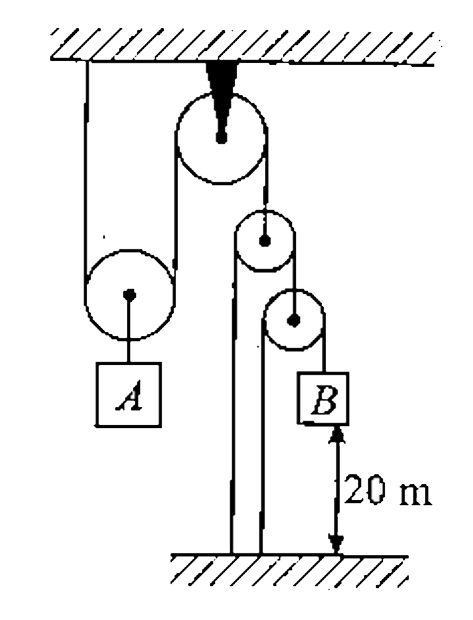 View Solution
View Solution
Knowledge Check
- Question 1 - Select One
The blocks A and B shown in figure have masses MA=5kg and MB=4kg. The system is released from rest. The speed of B after A has travelled a distance 1m along the incline is
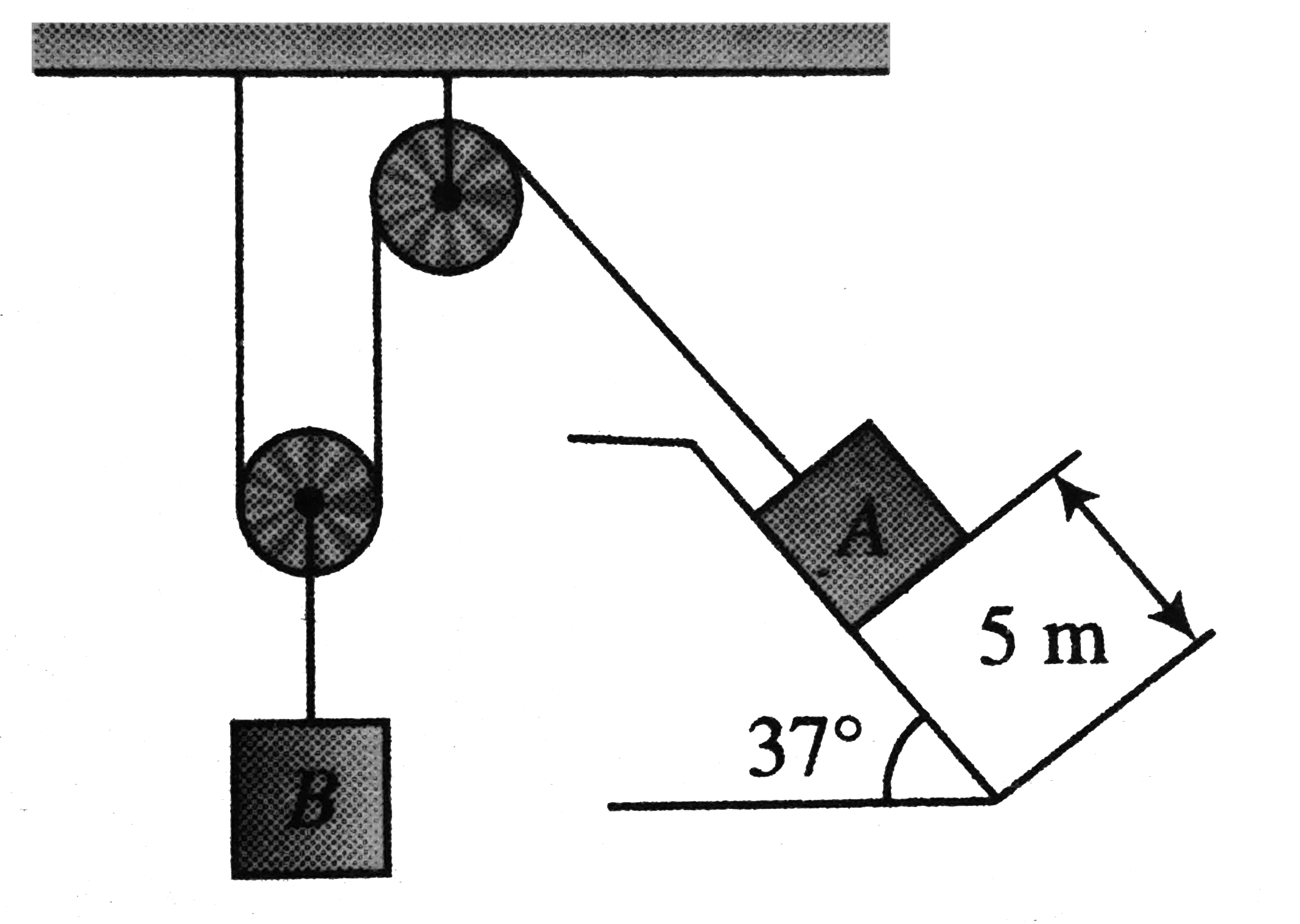 A(a) √32√gB(b) √34√gC(c) √g2√3D(d) √g2
A(a) √32√gB(b) √34√gC(c) √g2√3D(d) √g2 - Question 2 - Select One
Block A has mass 40kg and B has 15kg and F is 500N parallel to smooth inclined plane.The system is moving together
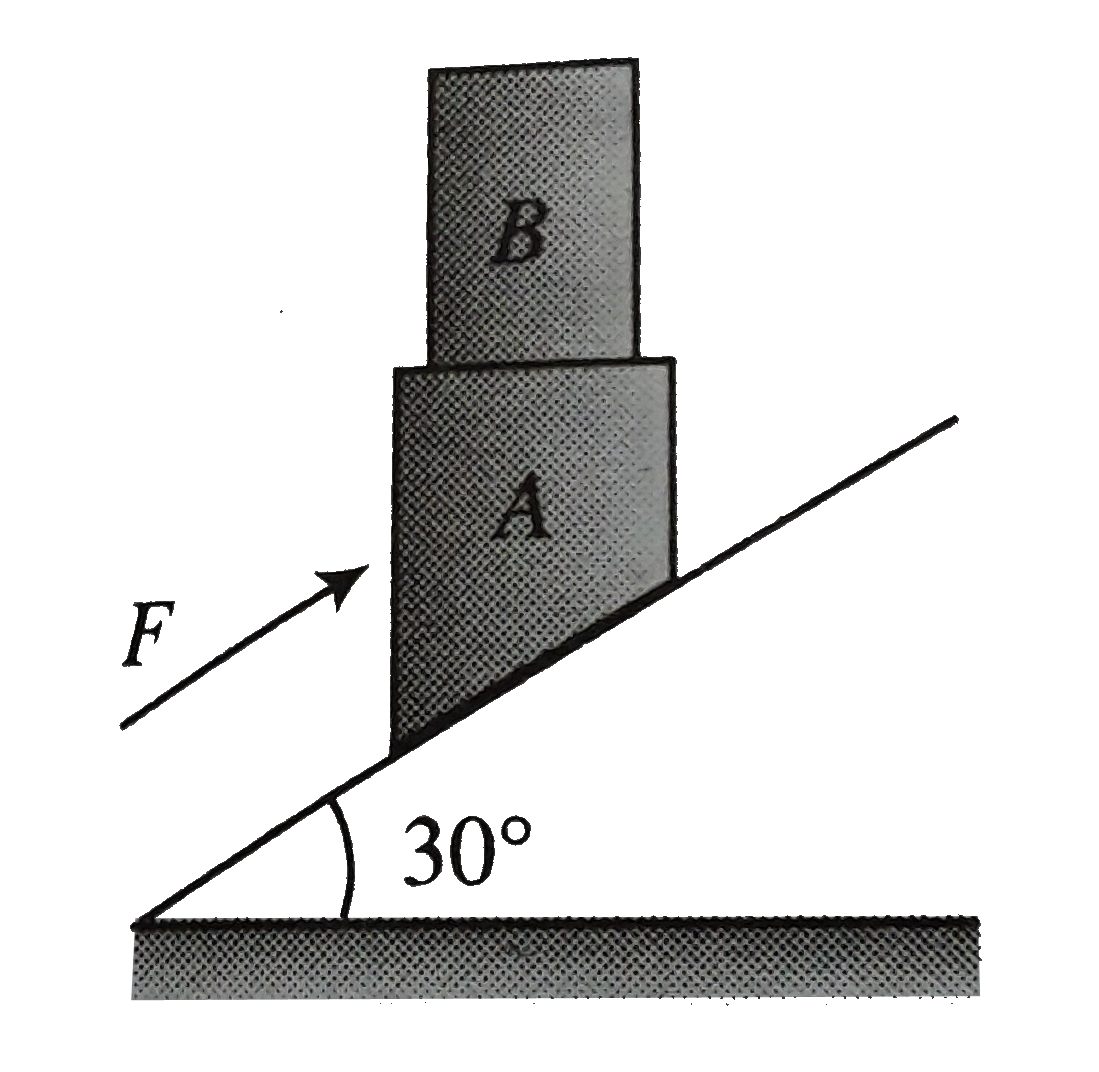
The acceleration of the system isA4511ms−2B2311ms−2C137ms−2D83ms−2 - Question 3 - Select One
Two blocks A and B of masses 5kg and 2kg respectively connected by a spring of force constant =100Nm−1 are placed on an inclined plane of inclined 30∘ as shown in figure If the system is released from rest
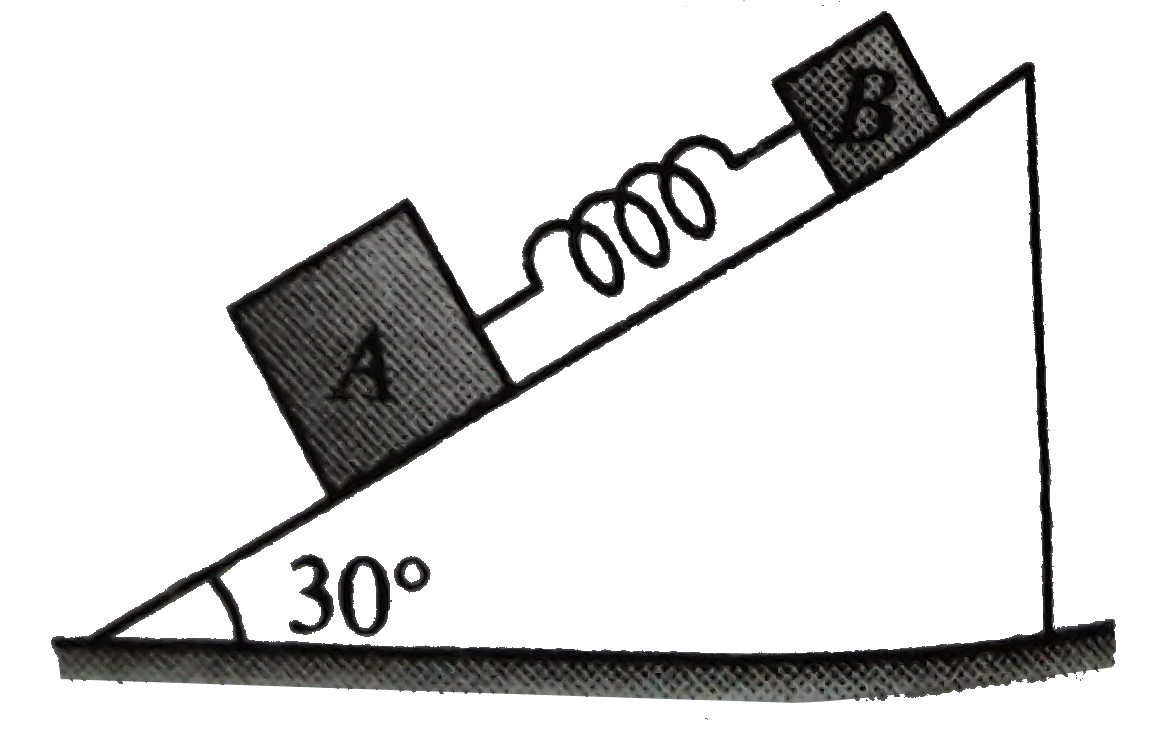 AThere will be no compression or elongation in the spring if all surface are smoothBThere will be no compression or elongation in the spring if A is rough and B is smoothCMaximum elongation in the spring 35cm If alll surface are smoothDThere will be no compression or elongation in the spring if A is smooth and B is rough
AThere will be no compression or elongation in the spring if all surface are smoothBThere will be no compression or elongation in the spring if A is rough and B is smoothCMaximum elongation in the spring 35cm If alll surface are smoothDThere will be no compression or elongation in the spring if A is smooth and B is rough
Spheres A and B of uniform density have masses 1 kg and 100 kg respectively. Their centres are separated by 100m. (ii) Find the gravitational force on An due to the earth.
[M(earth)=6×1024kg,R(earth)=6400km]View SolutionIn the system shown in figure, all surfaces are smooth, pulley and strings are massless. Mass of both A and B are equal. The system is released from rest.
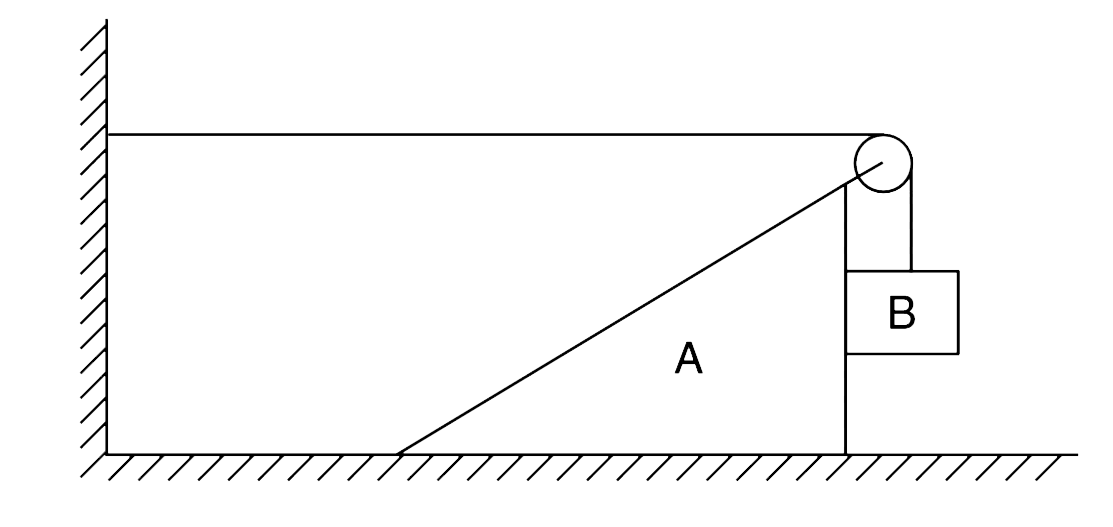
(a) Find the →aA.→aB immediately after the system is released. →aAand→aB are accelerations of block A and B respectively.
(b) Find →aA immediately after the system is released.View SolutionIn the system shown in fig, mass of the block is m1=4 kg and that of the hanging particle is m2=1 kg. The incline is fixed and surface is smooth. Block is initially held at the top of the incline and the particle hangs a distance d = 2.0 m below it. [Assume that the block and the particle are on same vertical line in this position]. System is released from this position. After what time will the distance between the block and the particle be minimum ? Find this minimum distance. [ g=10m/s2.]
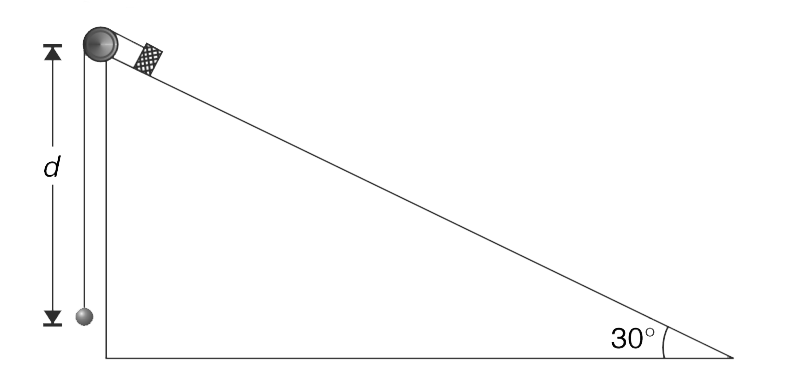 View Solution
View SolutionTwo boxes A and B of masses m and M interconnected by an ideal rope and ideal pulleys are held at rest as shown. When it is released, box B accelerates downwards. Find velocities of box A and B as function of time t after system has been released.
 View Solution
View SolutionBlock A has mass 40kg and B has 15kg and F is 500N parallel to smooth inclined plane.The system is moving together

The least coefficient of friction between A and B isView Solution
